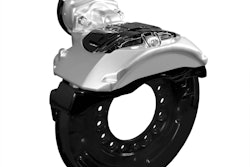This blog was provided exclusively to CCJ by Joe Puff, vice president of truck technology and maintenance, NationaLease
If proper vehicle specification is the starting point for a discussion of best maintenance practices, working with the right supplier is the second step.
 Joe Puff, vice president of truck technology and maintenance, NationaLease
Joe Puff, vice president of truck technology and maintenance, NationaLeaseToday with continuous regulatory changes, hyper-speed technology advancements, and engineering and materials development, we no longer have that proven life-cycle data to support our purchasing decisions. No one today can afford to wait seven years for intelligence that in the end could be woefully outdated.
By the time all the data is collected and analyzed, many of the components and technological breakthroughs will have changed significantly. That said, it is still important to perform life-cycle analysis where appropriate, but it is every bit as important to select suppliers that stand behind their products and services.
Let’s be honest, when a supplier makes a product or design mistake, we still expect that supplier to stand behind the product — even after the warranty period — if they expect to keep the business relationship going.
But with the speed of regulatory changes, coupled with ever-increasing technology innovations, the OEM research and development test schedules are being rushed in an attempt to get product to market before the competition. They no longer have the luxury of time, let alone seven years, to gather real-life data collection to prove their product performance claims. As a result, we’ve seen some fairly significant product quality issues in recent years.
How a supplier responds to customer complaints or problems is one of the truest ways to evaluate just how much a company values the relationship and commitment to their customers.
Finding a supplier “partner” that stands behind its products and services will overcome any quality or delivery issues along the way and should be a significant factor when making your purchasing decision.
It’s easy to deliver good customer service when things are going well. But the real service test is passed or failed when there’s a problem that needs an immediate response, be it an apology, a replacement part, or the promise to make things right, no matter what the cost.










